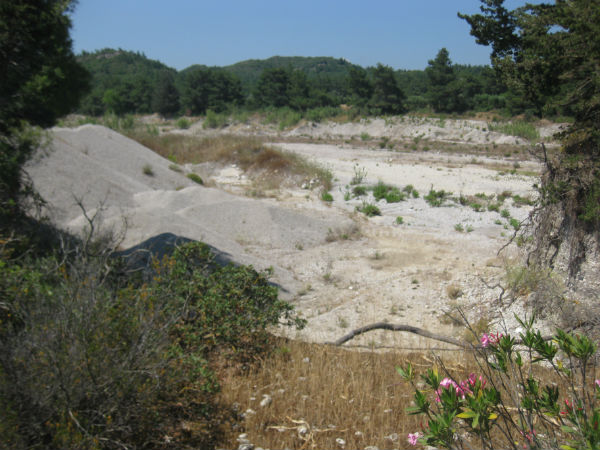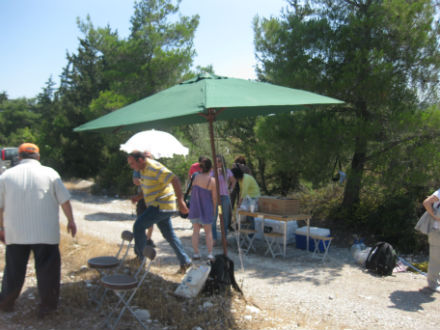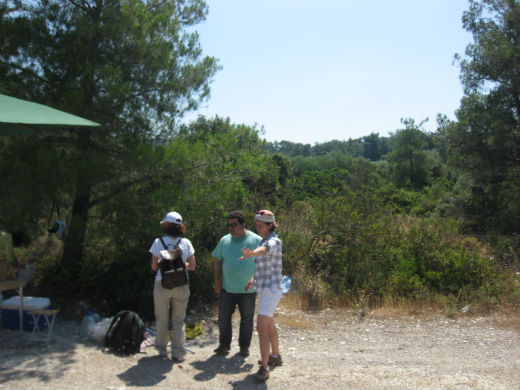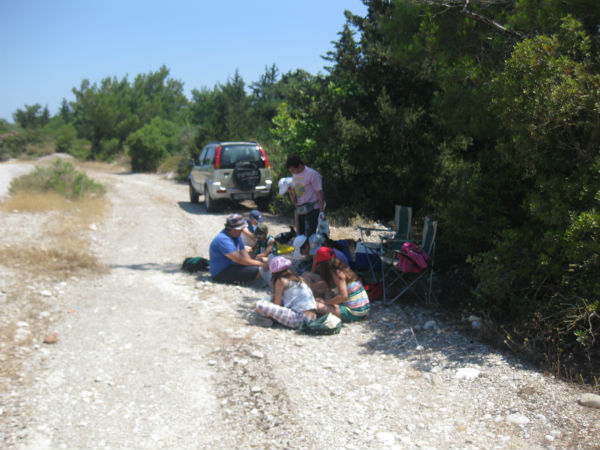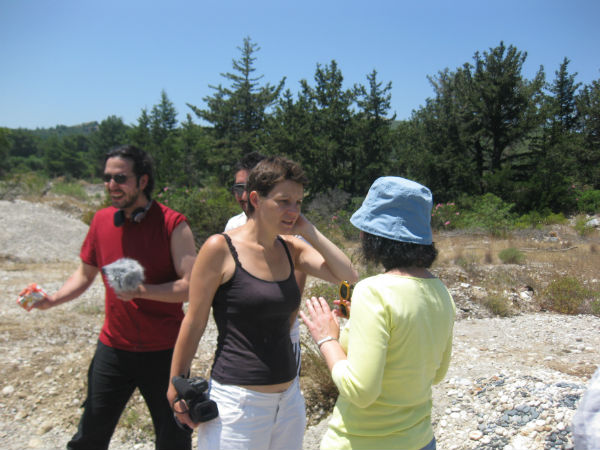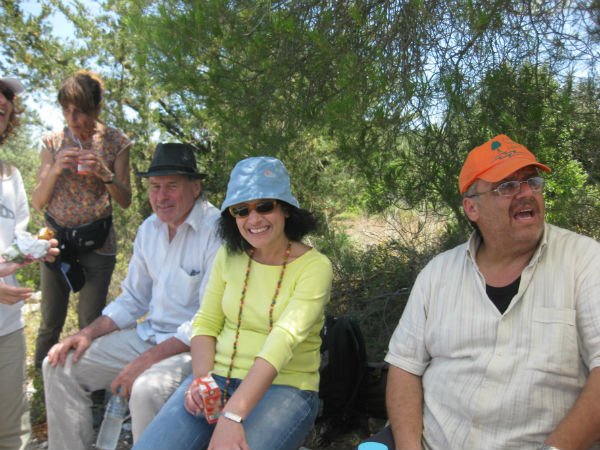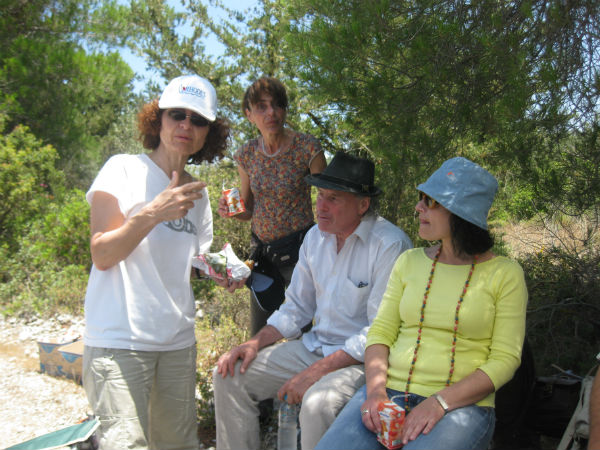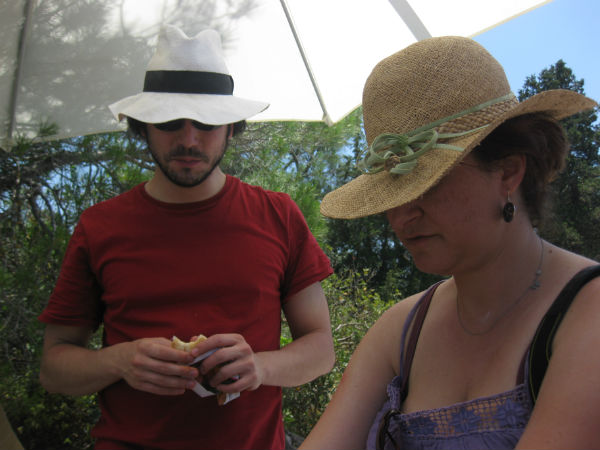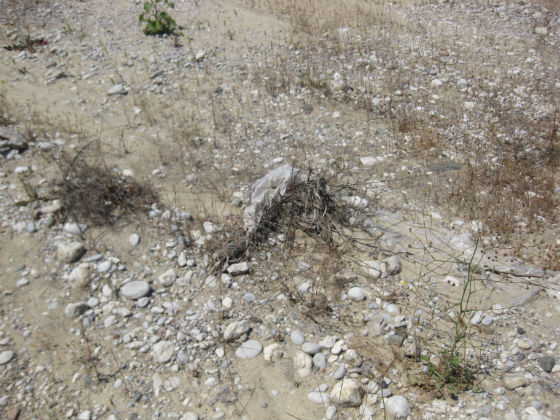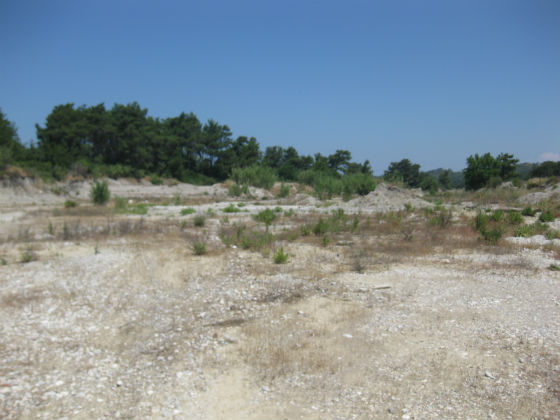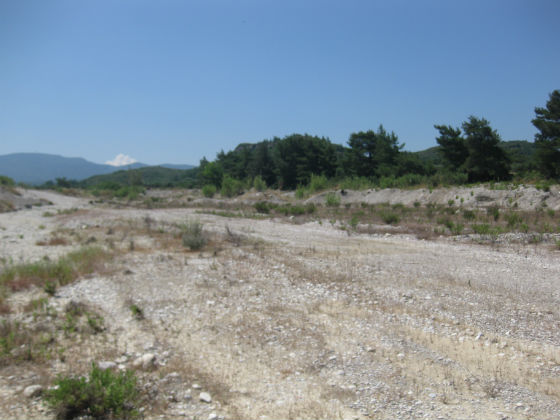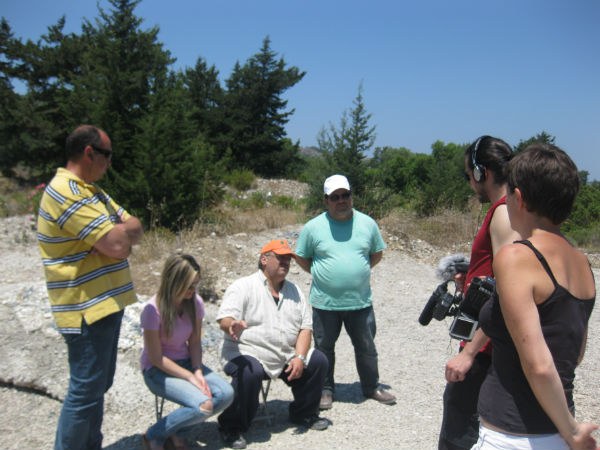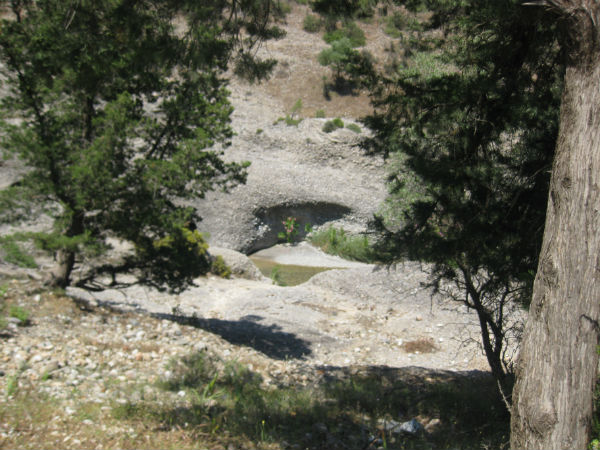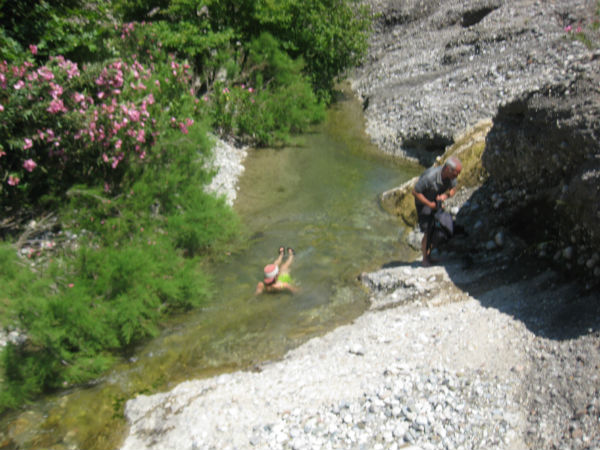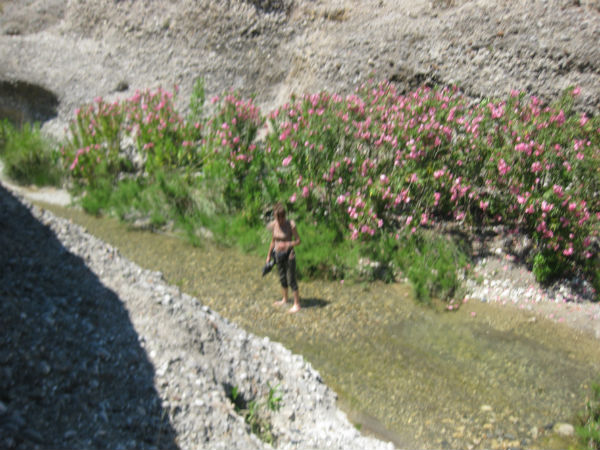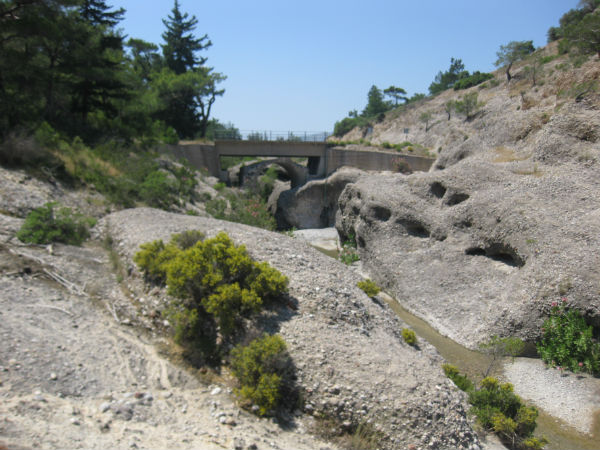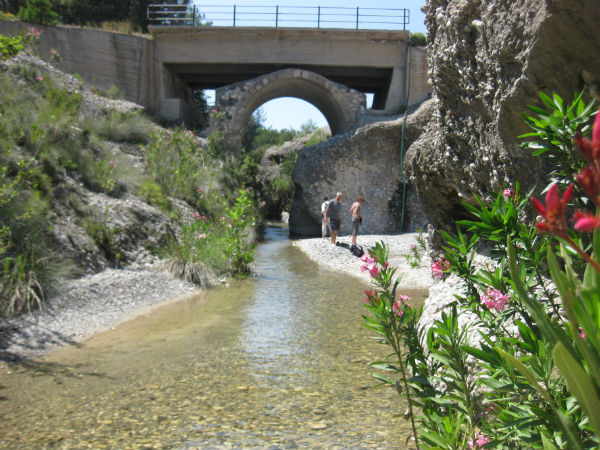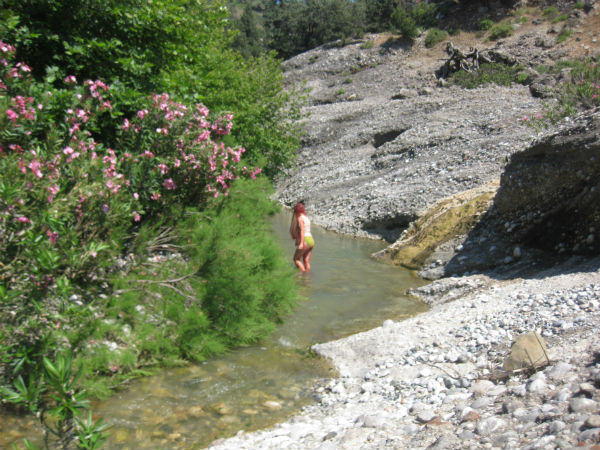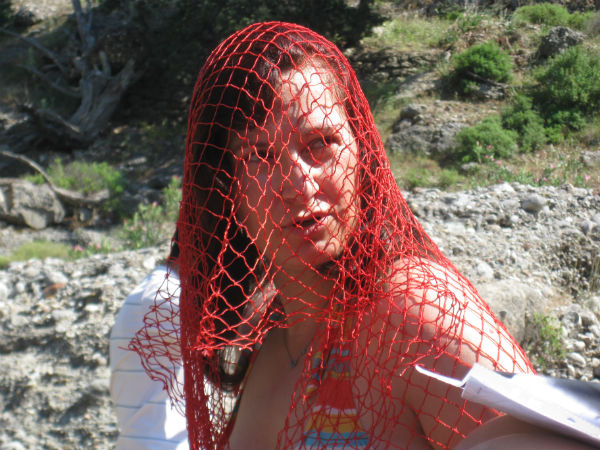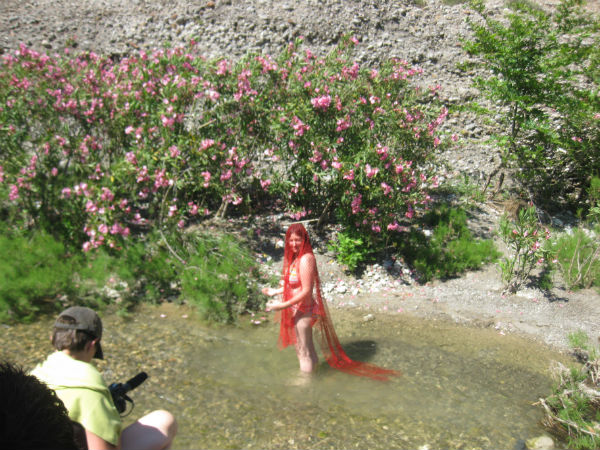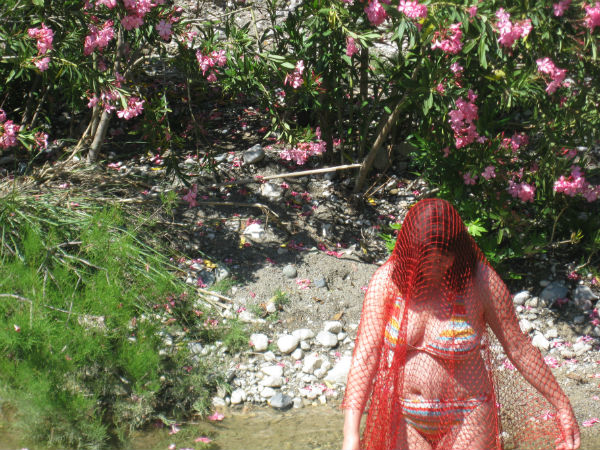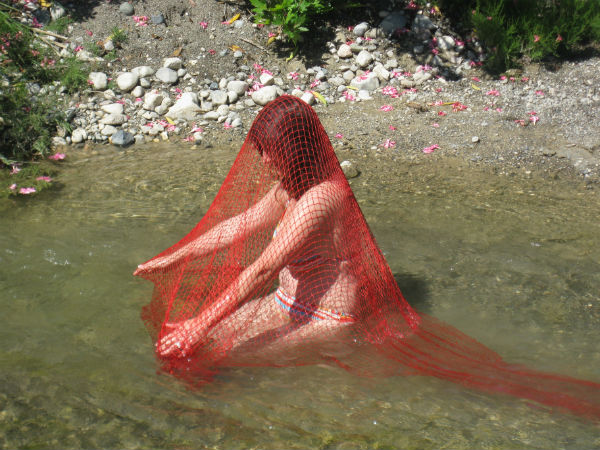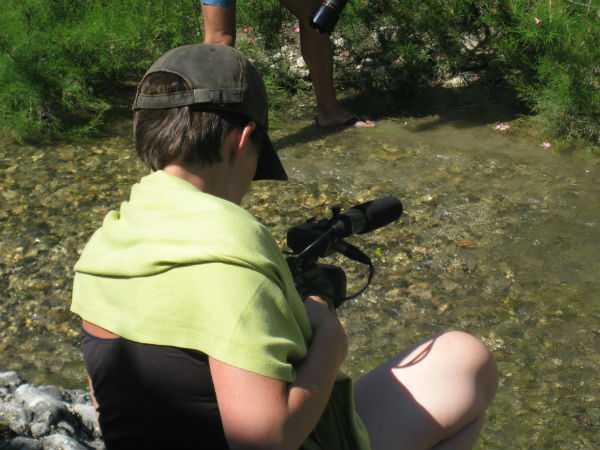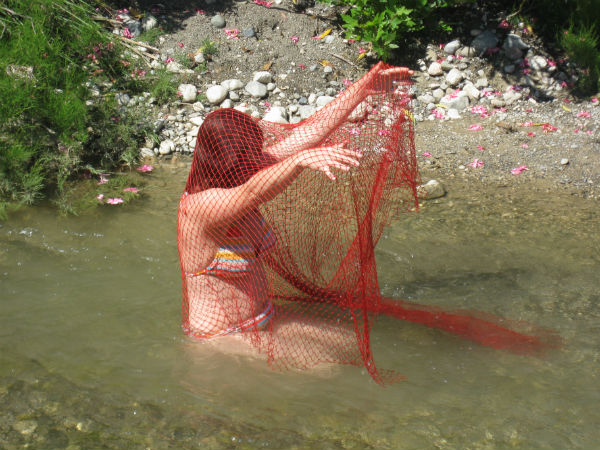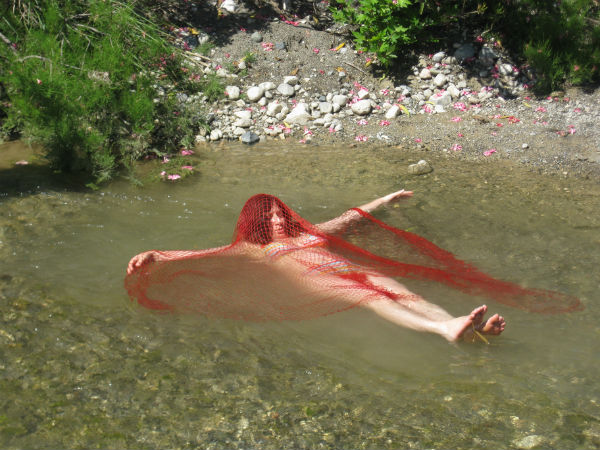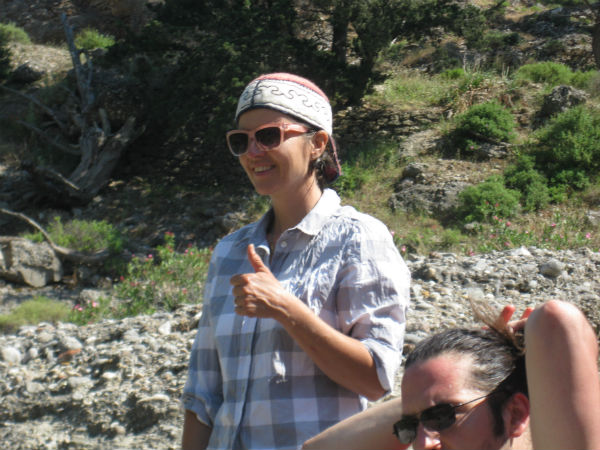Wednesday 1st of June 2011
Wednesday 1st of June
|
Day program |
Breakfast 9.30 Briefing: field work and second educational interaction 10.00 Depart Meeting with 2 classes (20 children from 4th Grade and 15 from last Grade) of Elementary School of Soroni at Eleousa Springs Boudewijn Payens: Art as form of social communication Insa Winkler: Land art installation together with the children at River Platis Discussion with local community, environmental and cultural groups, and local authorities. Nymphs - enactment by Haroula Hadjinicolaou, Insa Winkler and Maria Bakari 18.00 – 20.00 Work session Nikos Kasseris, issues of development on the island of Rhodes Phivos-Angelos Kollias, musical eco systems 21.00 Dinner |
Meeting point with the children was the Eleousa fountain,
or the place of the seven springs
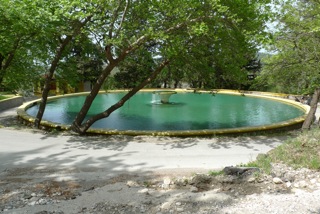

Eleousa spring with one school boy
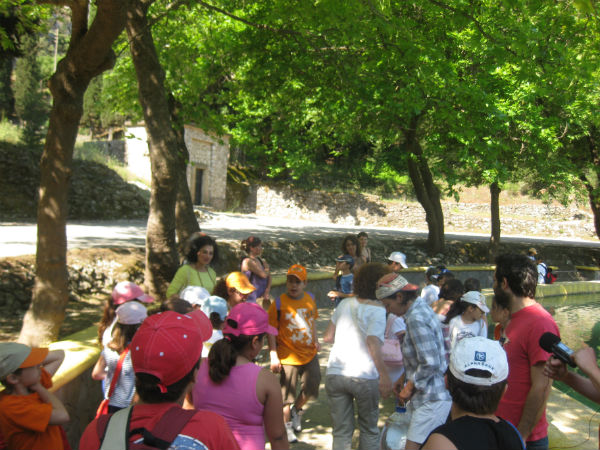
Hourala Hadjinicolaou gathering the children
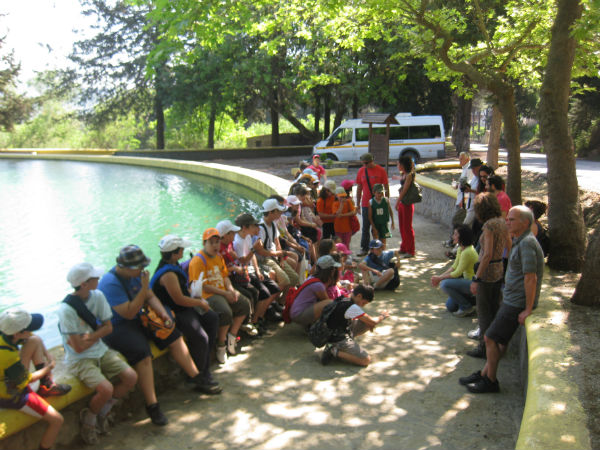
Haroula Hadjinicolaou discussing with the children
"How to save a drop of water?", was the leading question, and one child replied immediately it is possible to close the tab while brusing one's teeth in the morning and evening.

Haroula Hadjinicolaou engaging the children
Questions about water need to be asked in a way that it becomes clear that awareness alone will not do. The importance of such encounters with children means also to confront a double future, that of the earth and its resources and that of the children. Over centuries different wisdoms applied when it came to use of water. The seven spring site is a good example, as it were Italians who constructed this fountain. It is linked to a lake and dam they build close by.
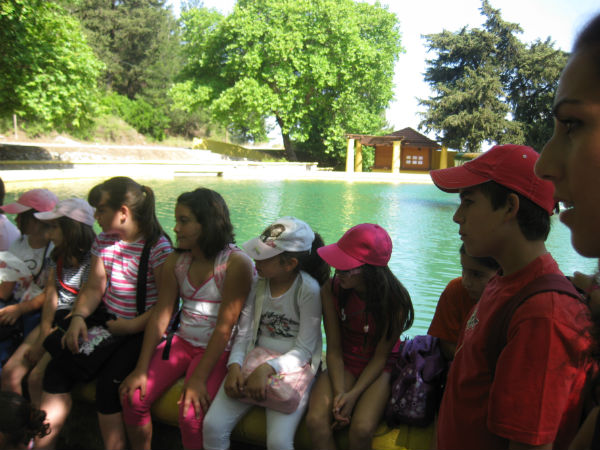
All listen carefully
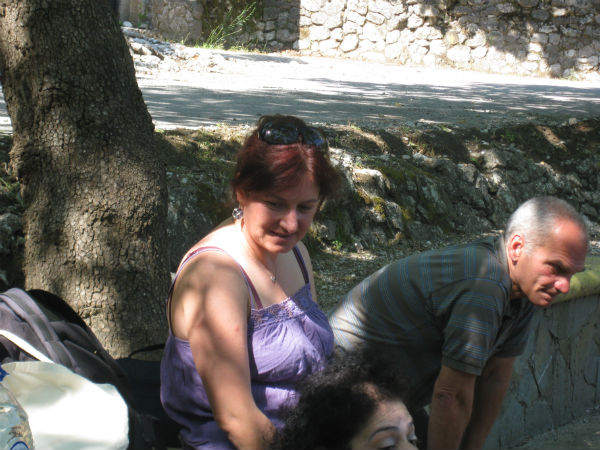
Maria Bakari and Iakovos Xenakis
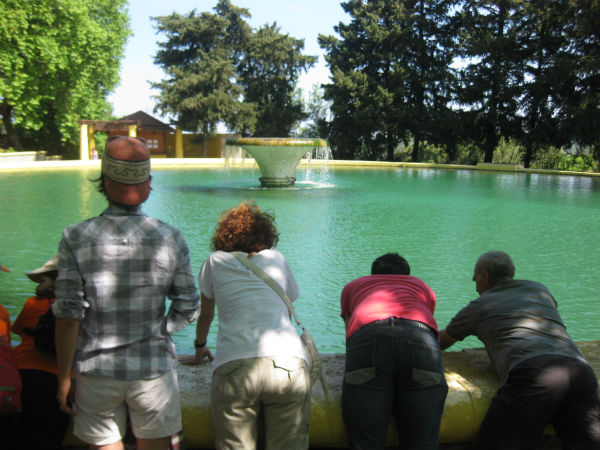
Looking at the water
'Looking at the water' is an experience to be reaccounted as a way of feeling time flow with the birth of the earth especially when sunlight plays on the surface while making visible the goldfishes swimming about.
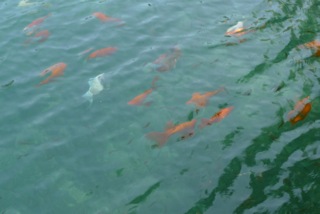
Gold fishes

Iakovos Xenakis and Michaelis Chondros
The children were themselves a great bunch. There was an immediate liking each other. Obviously they liked taking off from school and be outdoors.
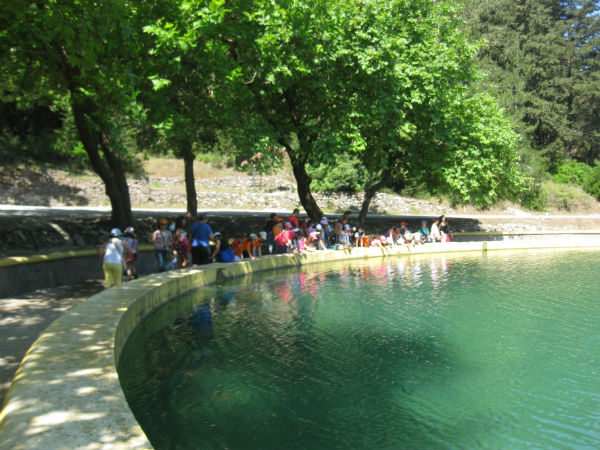
Children at the fountain Eleousa
Action at Platis river
Together with the children from two classes we went to the Platis river bed where we met representatives of the local community. The action with them had been prepared when Haroula Hadjinicolaou, Anna Arvanitaki and Insa Winkler went to Rhodes during Easter 2011. Still, as Anna Arvanitaki would put it, preparation is one thing, quite something else when the real action starts.
"This dried out river bed is a part of our land; that is all what we got"
Dried out river bed
A small community struggles to preseve the land. This is proving to be increasingly difficult. While sand and gravel is extracted from the dried out river bed, cement trucks leave like big animals their rest behind - a pile of cement.
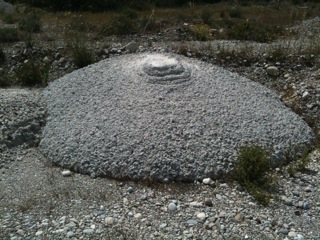
Cement heap
Waste disposal is a huge problem in Greece. Besides illegal landfills, almost everyone is tempted to discard things simply on the road side. Here is evidence of the river embankment being used by cement trucks to empty their last bit of cement before returning back to base. Insa Winkler had the brilliant idea to use these piles of cement lying there like shit and make out of them a mosaic sculpture out of small stones. This technique is well known in the area and these 'petralis' decorated indeed court yards and public squares. As land artist she knows once something is elevated to a work of art the land falls under other legal aspects. It is one way to promote protection of the land. Also it gives the children an idea on how out of something negative there can be made something of value.
Sunroof prepared by community
Insa discussing with community man about right spot
Insa Winkler had been at this location already. Together with Haroula Hadjinicolaou and Anna Arvanitaki they had approached the community and asked for support. Besides materials for the sculpture, the community provided as well small snacks and plenty of drinks. For Wednesday the clouds had left and it was very hot besides the dried out river bed.
Waiting in the shade for the action to start
Social sculpture by Insa Winkler
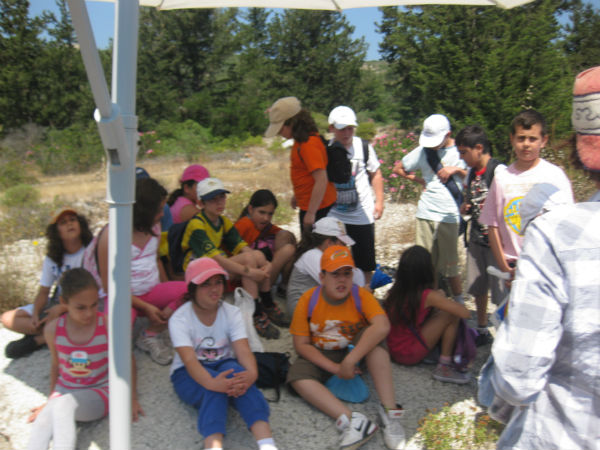
Children atop the heap of cement waiting for instructions
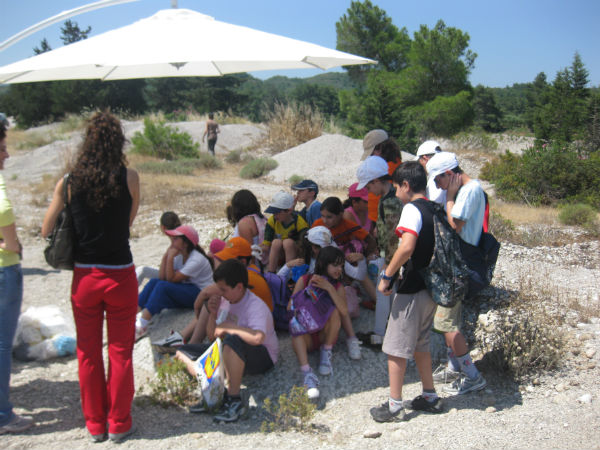
Unpacking the stones they had brought with them

Mixing of cement
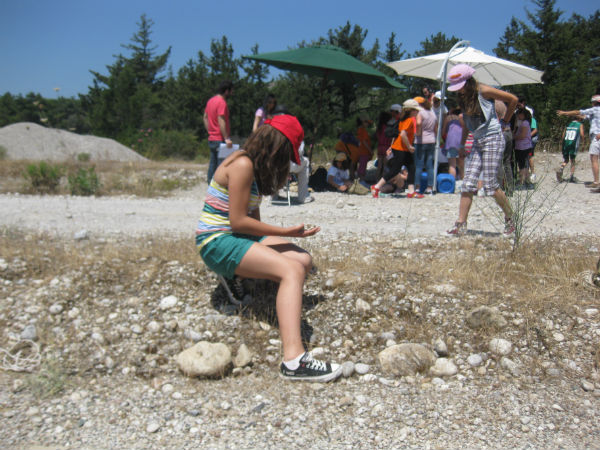
Children gathering white stones
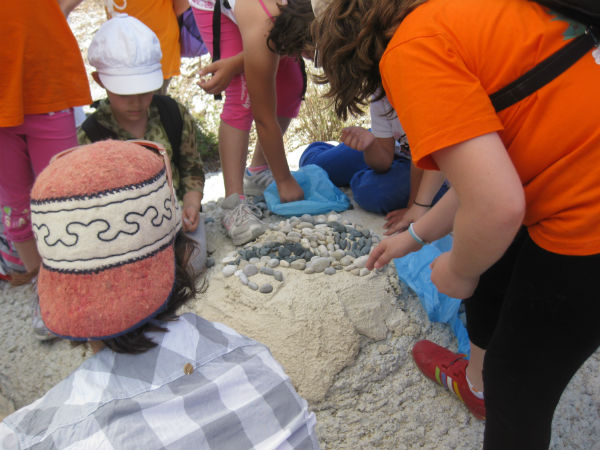
Placement of first stones on sculpture
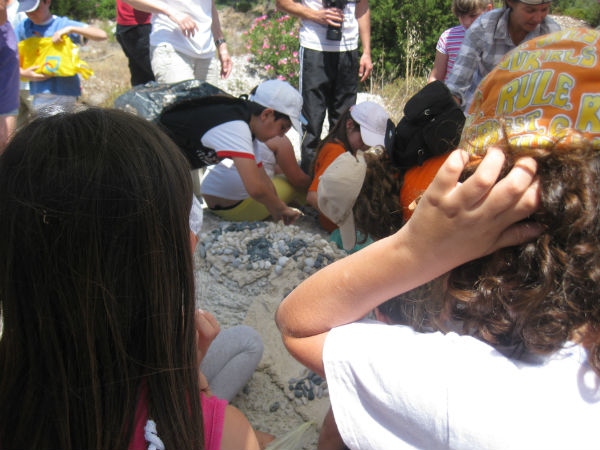
Diligent work continued
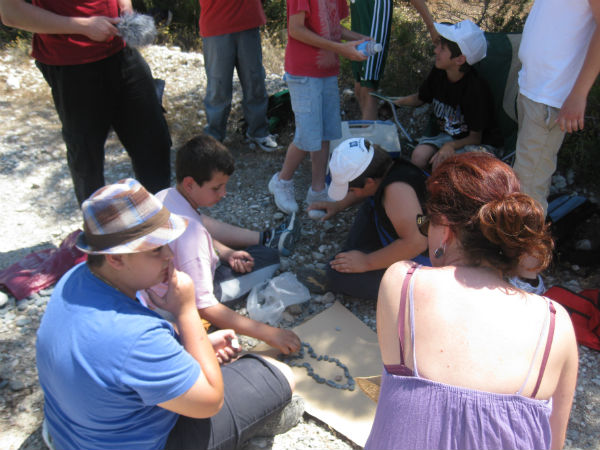
Design of fish completed before transferred onto sculpture

Completed sculpture with many little fishes swimming along
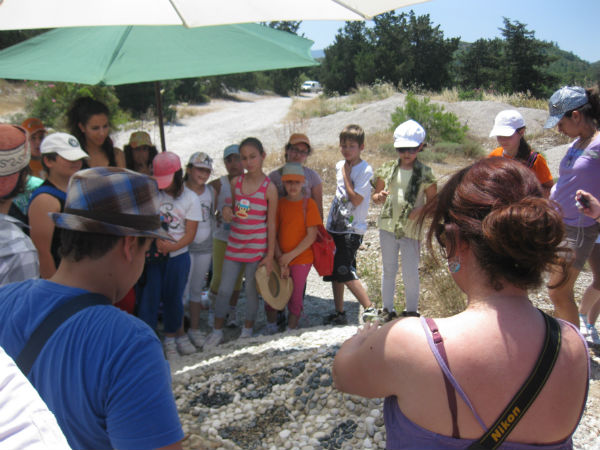
Gathering around the sculpture
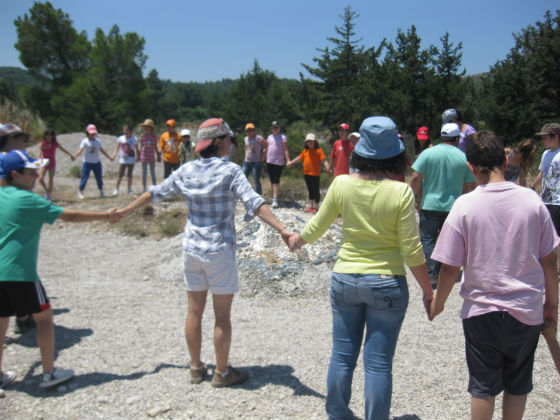
Making of a social sculpture

In the end all participants of the workshop gathered around the newly created sculpture to honor what the children had just done collectively with Insa Winkler.
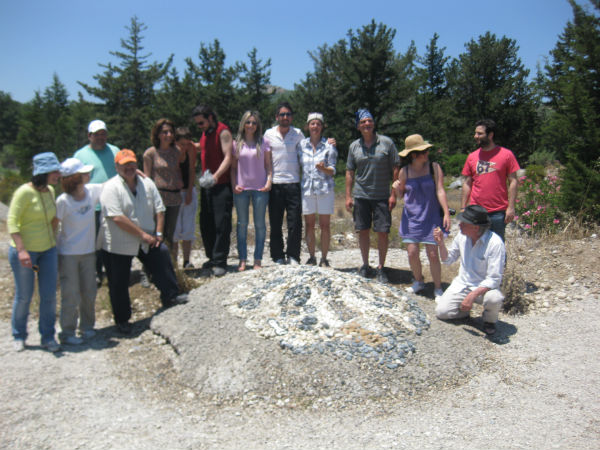
All participants of workshop together with members of the local community
Phivos Kollias, Alexandra Zanne and Haroula Hadjinicolaou
Actions in the sun call for precautions like bear in mind the sun, but also Alexandra Zanne wishes to know exactly what Haroula has in mind when asking for a special film. It is not sufficient to have just general guidance. On the spot new questions pop up.
Maria Corsini Foka, Boudewijn Payens, Haroula Hadjinicolaou, Community man
Anna Arvanitaki, Maria Corsini Foka, Boudewijn Payens, Haroula Hadjinicolaou
There developed in the group some interesting dynamics. While Maria and Anna shared experiences of what it is like to work in the Greek administration, Haroula was getting to know Boudewijn. He knew Insa Winkler and upon her recommendation, and after Hatto Fischer had met Boudewijn Payens at the Kids' Guernica and ECoC conference in Ghent, Feb. 19, 2011, he supported Insa's suggestion. What seemed to work through the entire group was something like giving everyone an uplift in spirit. It proved how right was Haroula to do precisely such an action when everyone assumed Greece was in crisis. For Anna and Maria this meant getting encouragement for they have dedicated their entire life to do just good work despite all the obstacles an inefficient administration poses. Their presence made an interesting counterpoint to an artist like Boudewijn Payens from Amsterdam.
Action by Insa Winkler with plastic bottle
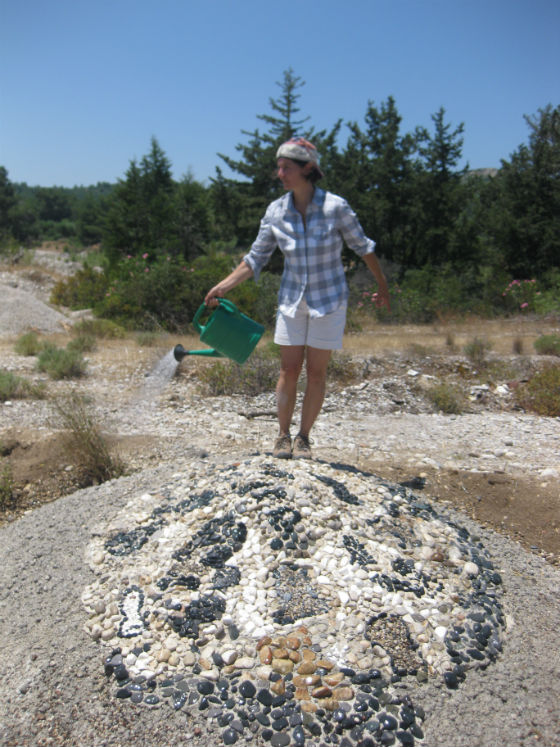
Insa Winkler sprinkling the sculpture

Bag full of plastic bottles atop the sculpture
Phivos Kollias and Maria Bakari talking with their hats while heads are up to see who sees them
Social communication by Boudewijn Payens
Art is many things, including design, form and communication. Boudewijn Payens combines all three aspects. For instance, he went together with Insa Winkler and others to Chernobyl ten years after the disaster, and only once there, in seeing the plight of people who did not know what they eat, if it is safe, he decided to undertake with them something like an 'imaginary voyage'. He went with them out at that time of the year to the still frozen over playground contaminated and created with the people out of anything they could find a boat. Once ready to set sail, they all climbed on board and went on their voyage.
Coming from Amsterdam, he has done like Insa Winkler social sculptures. As a mountaineer he knows not only how to handle ropes, but how crucial is communication given the extreme reliance upon the others.
Preparing the action
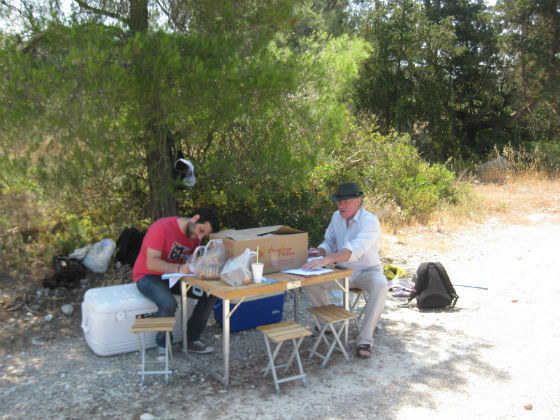
Boudewijn Payens, Stamatis Moschous

Children with Boudewijn Payens
Those who did not wish to participate in the making of the sculpture together with Insa Winkler, they joined Boudewijn Payens. Together they went with him down into the dried out river bed. Boudewijn Payens had an eighty meter rope with him. Once he started to explain what he had in mind, the children all said: "what a great guy!"

Children ready for the action
In the above photo Phivos Kollias can be seen doing his recording while Haroula Hadjinicolaou was doing the translation into Greek. Interesting is the position Boudewijn Payens takes. He stands back and waits for all ready to begin the action. The task was to take the rope whose ends he had tied together and to create first of all a circle. It had to be done without anyone speaking. Only signs and uttered hints of sounds could be used to urge the other to move a bit or to take a stand.
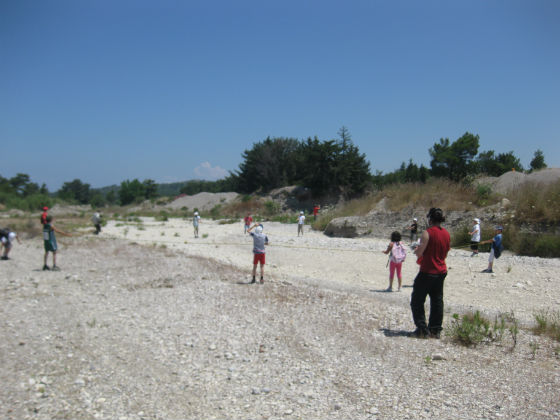
Children creating a circle with the rope
Once they had done this first task, the children were then asked by Boudewijn Payens to create a David Star. Again they had to do this without words!
Communication without words comes close to the kind of literacy needed if man is to be able to come to terms with nature. When poets say water talks, then it is a figurative speech. Nature does not need any translator. The communication base are the senses. They speak direct and clear. Then there is a need to go on from there.
The conditions of the river Platis
Detail
The action by Iakovos Xenakis
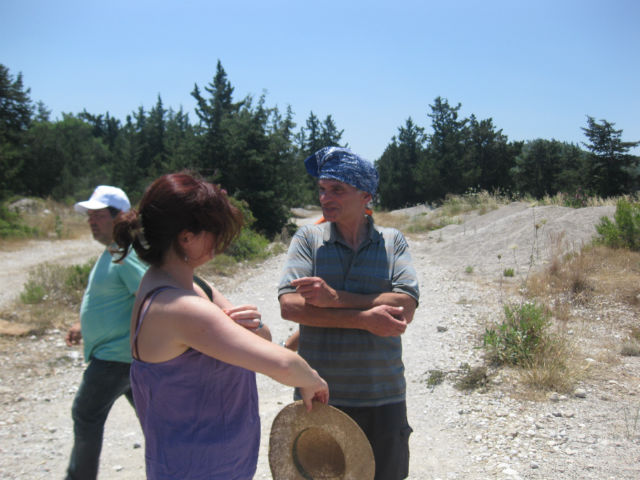
Maria Bakaris speaking to Iakovos Xenakis
While the actions of Insa Winkler and Boudewijn Payens took place, the artist Iakovos Xenakis from Mani went off by himself. He explored the dried out river bed and discovered to his surprise a spot with some residue of water. He had taken with him his water colours. At that spot he started to use the water for sensitive drawings. Some of them are depicted in the catalogue. They show sensitivity for plant life with life and death contrasted between green vegetation and straw like remainders of former grass or indeed weed. Every creation of nature is depicted in these drawings by a special combination of colours. He mixes the yellow with green and vice versa and lets the brown colour of earth underline everything. The drawings make vivid the basic substance of things in niches of nature where some water is left.
Alexandra Zanne and Phivos Kollias making interview with local community leaders
Later on the group would get to know Fotini from WWF. She explained how important for her organization is the interaction with local communities. They have people at location to make sure the environment stays on the agenda of every local community. For the group it was a most fruitful interaction based on mutual appreciation of what can be done to face together all the environmental and economic challenges which lie ahead on an island like Rhodes.
The enchanting world of the nympths
Place to descend to the river below
Insa Winkler
Maria Corsini Foka - the biologist
View of bridge upstream
Full view of old and new bridge
Scene downstream
The Nympths revived
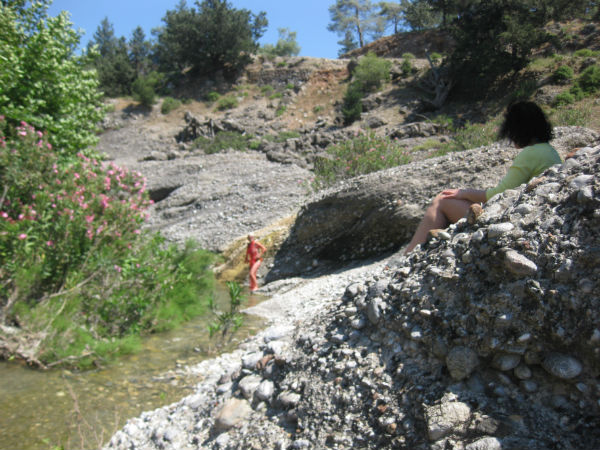
Let the act begin
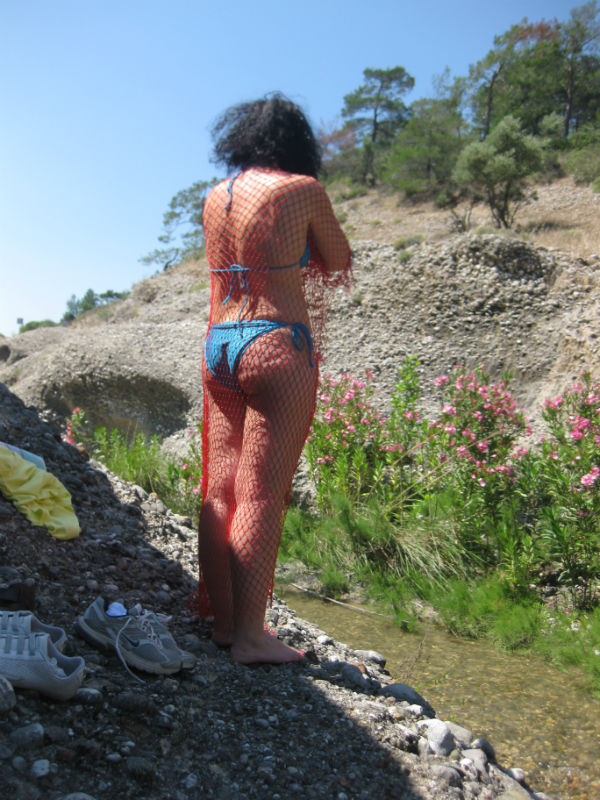
Haroula, the second nympth, contemplating
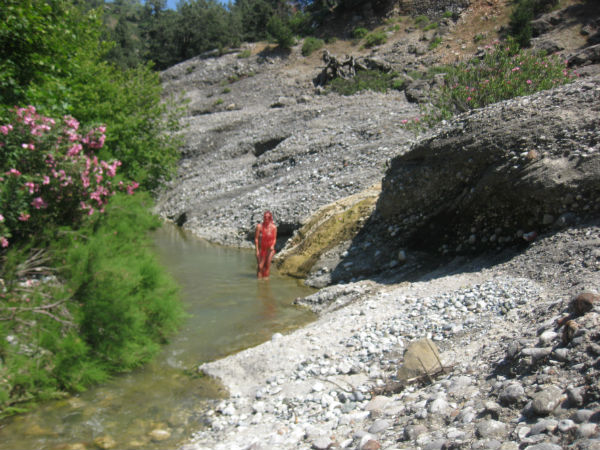
First nympth waiting for her sister to join

Second nympth getting sense of direction

Second Nympth about to join the first one downstream
Action by Insa Winkler
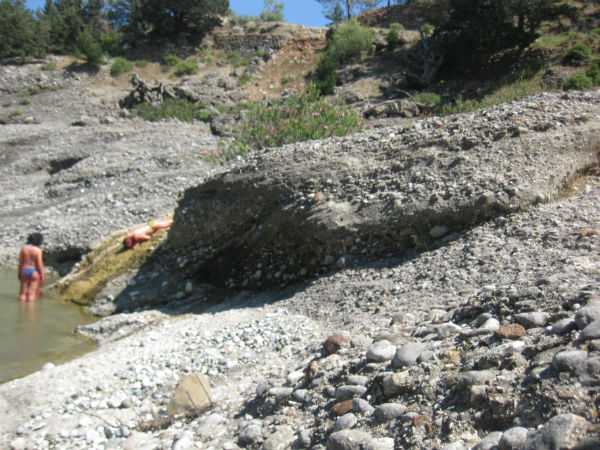
First nympth sliding into the water
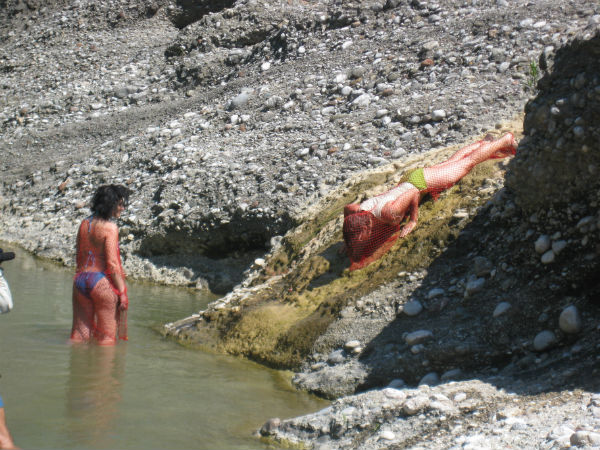
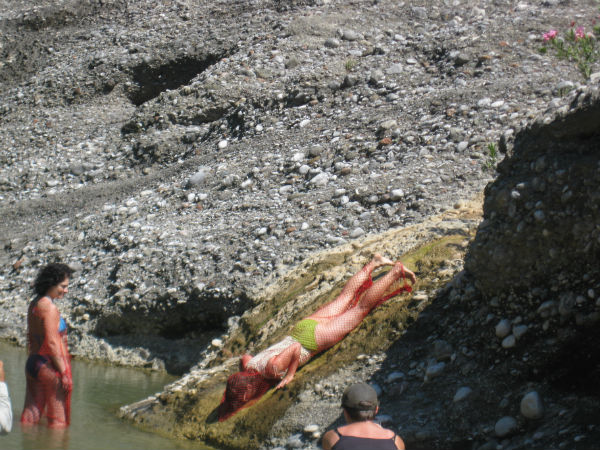
Haroula watching Insa slide into the water
The third nympth joining in - Maria Bakari
|
|
|
|
|
|
|
|
|
|
|
|
Alexandra Zanne filming the action of the third nympth, Maria Bakari
Back on dry land, Insa Winkler watching
Evening presentations
Nikos Kasseris: Issues of Development on the Island of Rhode
Outstanding issues:
1. Natural environment
Forest fires (2008) when 132 000 Stramata burned
Vegetation, founa, animals, water balance
Natura 2000
2. lack of urban /spatial planning
- no effective land use plan
- permission to construct everywhere to easily given
- wetlands under threat
- increase in traffic but no political will exists to find a technical solution
Examples:
Airport at Rhodes build over former wetlands
Port under construction since 1964
Pipe system opening up public spaces
Illegal construction
3. Waste
- solid waste: no management of waste in place / no prevention policy
- palm trees: although landmark of Rhodes, they were affected by disease and disposed of as if just rubbish
Example: His NGO has developed a system by which recycling of paper become possible. in terms of output but also being a financial enterprise which can use empty trucks returning to Athens to ship waste paper for recycling to a factory in Athens, provided this company does not use recycled paper for making cartridges i.e. live ammunition.
4. Energy issue
- high demand comes from use of fossil fuels
- one power plant
- alternative energy use has started (solar, wind) but covers only 4% of total demand
5. erosion of shores (Western part of the island)
- threatens properties and economic base
- happens throughout Greece
6. water resource
- only bad water management system in place
- loss of water quality (salt)
- sudden floods in March 2011 caused a lot of damage especially to former wetland areas (estimated 7 Mill. Euros)
The dam lake is a solution, but the overall demand for water needs to be reduced. There is a lot of waste when it comes to consume water. As this is related to tourist development and especially the building of swimming pools, other regions in Greece have gone over already to prohibiting the construction of swimming pools.
7. cultural heritage of Rhodes
- cultural heritage in bad shape due to bad management
- in Rhodes with its castle a triangle between heritage, tourist function and build environment can be established when seeking to analyse the problems incurred
With regards to wetlands, many are destroyed by having from them sand and gravel extracted and thereby the river is destroyed.
« Tuesday 31st of May 2011 | Thursday 2nd of June 2011 »

